In the second in our series on materials, Thomas Lane looks at the ways in which the steel industry can reduce its carbon emissions, such as by recycling steel, reusing existing sections and yes, using less of it
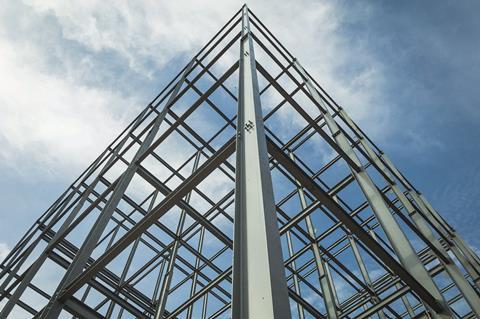
The world’s first iron and steel buildings in Chicago were built toward the end of the 19th century and set the scene for modern architecture. The Home Insurance building, completed in 1885, featured iron columns embedded in its masonry walls which allowed it to reach the impressive height of 10 storeys without the need for huge, heavy masonry walls.
Five years later the first all steel-framed building was built, also in Chicago, and Britain’s first steel-framed building was constructed soon after in the last decade of the 19th century. From there the only way was up, and the modern skyscraper was born.
Global steel demand rose accordingly, and by 2020 global production was 1,878 million tonnes. This was a dramatic increase on the 850 million tonnes produced in 2000, which was just 133 million tonnes up on the 1980 figure. China now consumes over half the world output of steel; in 1991 it used under 10%.
Unlike concrete, steel is used for many different building elements. These include ductwork, ironmongery, motors, studs for portioning, raised access flooring … the list goes on. Even reinforced concrete contains 30% to 40% steel.
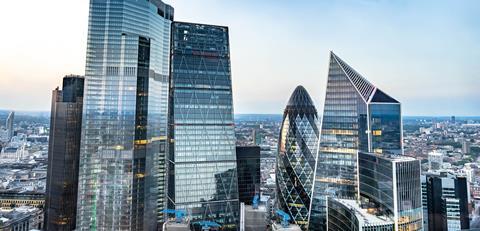
Steel is of course used for a multitude of other things, but the fact remains that, according to the OECD, 50% of global steel production is used in construction. Most of that steel ends up in the structure because, unlike steel beams and columns, non-structural steel tends to be very lightweight. And, according to the World Steel Association, steel production is responsible for 7% to 9% of global carbon emissions, which is slightly more than those from cement production. That means that cement and construction steel production combined is responsible for more than 10% of the world’s carbon emissions. Here, we examine what the steel and construction industries can do to reduce this figure in line with the UK’s 2050 net zero target.
Steel production
There are two ways to manufacture steel: blast furnace and electric arc furnace. Blast furnaces are fuelled by coke, which is used to heat iron ore and limestone. A blast of high-pressure air raises the temperature to over 2,000ºC, which melts the ingredients to produce iron. This goes to a steel-making vessel where oxygen is blown at pressure onto the surface and lime is added, with the end product being steel and slag. This process is called basic oxygen steel (BOS) production.
Heat is produced inside an electric arc furnace (EAF) by an arc between electrodes. Electric arc furnaces rely on a high percentage of scrap steel, although a refined iron ore called direct reduced iron (DRI) can also be used for electric arc steelmaking. The EAF process is more efficient than BOS and there is the potential to power electric arc furnaces with electricity produced by renewables, although fossil fuels are used to produce DRI.
Globally, 73% of steel is produced using BOS, with 81% of the steel produced in the UK using this process. This higher figure is partly down to Britain’s long steel-making legacy and high electricity prices. Even today, most British scrap steel is exported overseas for EAF production to take advantage of lower electricity prices.
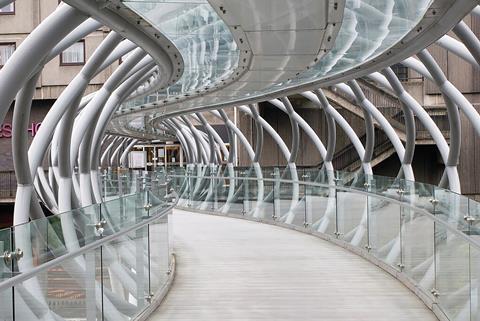
About 2 tonnes of CO2 are produced on average per tonne of steel using the BOS process, compared with just 0.4 tonnes of CO2 per tonne of steel produced from scrap steel using the EAF process. This increases to 1.4 tonnes if the EAF feedstock is DRI produced using natural gas. If coal is used to produce DRI and steel made using the EAF process, the emissions produced are higher than using the BOS process.
Why not just switch over steel production to recycled scrap steel using the electric arc furnace process? There are two reasons. The first is that there is not enough scrap steel to go around. According to Tata Steel, recycled material only satisfies 40% of global demand. Steel is infinitely recyclable and, unlike most materials, does not degrade in quality, which means that it enjoys a 99% recycling rate. This means there is no scope to increase supply.
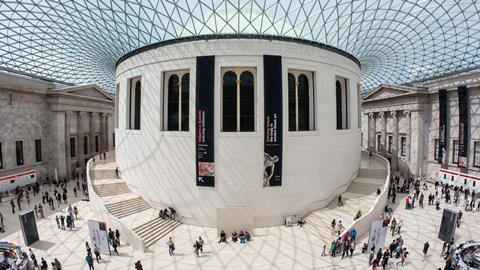
That leaves steel made from iron ore. Steel made from DRI using the EAF process is not much less carbon-intensive than BOS-produced steel. In any case, the steel industry is reluctant to invest in new plant given the vast costs involved and the existing overcapacity of the industry which is leading to trade wars between Europe, the US and China.
A spokesperson from Tata Steel said that converting basic oxygen steel plants to electric arc furnace was “40 to 50 years away”. And the industry is reluctant to invest given the uncertain decarbonisation policy climate. There is no point investing huge sums in new plant if government subsidies are coming down the track or the electricity grid does not decarbonise and expand to meet increased demand.
Tata Steel is experimenting with low carbon technologies – it is part of the South Wales Industrial Cluster, which is developing shared infrastructure including hydrogen supply and carbon capture and storage (CCS). This is at the engineering studies stage. Some companies in the cement industry are further ahead; for instance, Heidelberg Cement has started building the world’s first industrial-scale cement plant CCS facility in Norway.
Reducing the carbon impact of steel
First up – is it better to use concrete rather than steel? Qian Li, a principal engineer at Cundall who specialises in material lifecycle assessment, says there are multiple variables at play that determine this, including the percentage of low carbon cement replacements in a concrete mix and where the steel is sourced from. “Generally, if you use the worst concrete and the worst steel, steel is still better,” he says.
There are three main ways to reduce the carbon impact of steel in a project. These include using steel produced from a high percentage of recycled steel, reusing structural steel sections, and using steel more efficiently in a building.
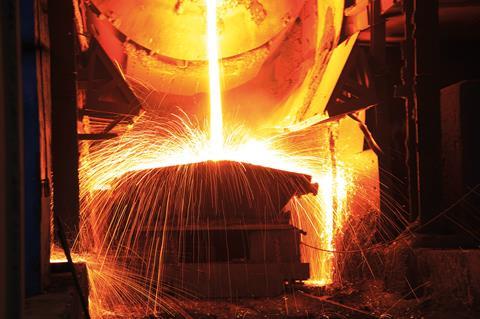
The good news is that it is very easy to check the provenance of new steel sections and rebar – the main consumers of steel in construction. Organisations including BRE produce environmental product declarations for rebar and steel sections.
David Moore, chief executive of the British Constructional Steel Association (BCSA), says in recent months steel specialists are being asked about the carbon content of their products as well as the cost. “At the start of a job it is very difficult to be accurate in terms of the carbon because the steel can come from a number of different sources, so what we publish is an average figure based on the steel that is consumed in the UK,” he says.
“The average figure is 1.74kg of CO2 per kilogramme of steel, which can be used at the initial design stage to determine the carbon footprint of a building. A more accurate assessment can be done further down the procurement route when you know where the steel is coming from.”
Recycled steel
Recycled steel has a lower carbon footprint than virgin material, thanks to the greater efficiency of the electric arc furnace process. Rebar can be made from very high percentages of scrap steel, which is reflected in it having a very variable carbon footprint.
Pat Hernon, BRE’s technical lead on sustainable products, says that the carbon impact of rebar can vary considerably from 300kg or 400kg per tonne to 2,000kg per tonne. There is less variability in steel sections as these tend to contain less scrap material.
But specifying steel with a high recycled steel content is like robbing Peter to pay Paul, because virtually all scrap steel is recycled and there is not enough of it to go round. This means that if someone specifies recycled steel for their project, then someone else will be forced to specify virgin material because of constrained supply. This does nothing to reduce the overall carbon impact of steel use globally.
Reusing steel
Reusing existing steel sections rather than scrapping them has the potential to offer the biggest carbon savings. The carbon footprint of reused steel is close to zero, as it avoids the emissions from sending scrap steel overseas, melting it down and reimporting it as new sections. The only emissions are generated from transporting the sections to a new location and making some modifications to make it fit for the new purpose. According to the BCSA’s Moore, 13% of structural steel is currently reused.
Warehouses are the most promising candidates for reuse as the roof and floors are easy to strip off the frame, which can be reused with minimal work. Cleveland Steel & Tubes has been supplying repurposed oil and gas pipework to construction for 45 years. As an example, the Olympic stadium includes 1,000 tonnes of repurposed gas pipe in its roof and the company also supplied tube for the retractable roof at Wimbledon’s No 1 court.
The company also supplies repurposed steel frames and built a 12,000m2 warehouse for its own use three years ago. This was part of a building destined to go to Ireland, but the order was cancelled because of the financial crash in 2008 and it had been sitting unused until bought by Cleveland which adapted it to suit its purposes. This saved it £1m on the cost of a new frame.
Roy Fishwick, the managing director of Cleveland Steel & Tubes, says it is “naïve” to think a building can just be taken down and put back up again. “Historical construction methods don’t lend themselves to this, on top of the fact this relies on someone wanting the exact same structure,” he says.

The frame can be modified to suit, but this is not straightforward as second-hand frames are usually painted, and the paint needs to be removed before the frame can be welded. And there will invariably be holes in the frame left over from the previous application which will be visible in the new structure.
Fishwick says you tend to notice these on the first day when closely scrutinising the new building but, by the third day, these are forgotten about. But this initial scrutiny militates against using repurposed steel. “Clients say they want repurposed steel then promptly reject it because it doesn’t look amazing,” he says.
There are other considerations, too. “Frames can’t be reused if the building has been in a fire and nor can anything that has been subjected to fatigue, so you wouldn’t use steel from a bridge,” says Moore. Older buildings use steel with a different composition, he adds, which rules it out for reuse. And the use of red lead to prevent corrosion is also an issue as it is carcinogenic.
Clients say they want repurposed steel then promptly reject it because it doesn’t look amazing
Roy Fishwick, managing director, Cleveland Steel & Tubes
On the positive side, Fishwick says getting warranties for second-hand frames and insurance is not an issue. A second-hand frame will either come with the relevant certificates or, if not, it is easy to get metal samples from the frame tested for its chemical and mechanical properties. The welds can be tested too.
“It tells you exactly the same thing the mill certificates do,” Fishwick says. He adds that building control and insurers are only interested in what is on the certificate. “If you have got the certificates, they don’t care if it is second-hand, brand-new or whatever it is.”
Redundant office buildings are potentially a bountiful source for repurposed frames, but they come with a serious downside. Office buildings are composite structures where the floors are made from concrete poured over a steel deck. The steel beams feature metal or shear studs welded to the top flange – these protrude through the deck into the concrete floor, locking the floor to the beam once the concrete has cured.
While this makes for a very strong structure, it makes disassembly uneconomic because of the effort required to separate the concrete from the steel. Fishwick says that people tend to think about either reusing the whole building or no reuse at all, when they should look at using some of it – such as the columns that are easy to recover – and scrapping the rest. “Go for the easy wins now; the more difficult wins will follow,” he says.
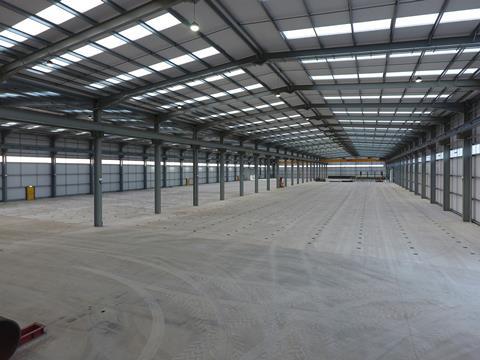
Ultimately buildings should be designed to be disassembled. “This needs to be thought about in advance; how is the concrete going to be disconnected from the steel while leaving the steel in reasonable condition,” Moore says, adding that there are proposals to use shear studs that can be unbolted rather than welded to steel beams, making disassembly much easier.
The price of scrap metal is another challenge because it affects the economics of reuse. “Scrap is £300 a tonne now. It was only £200 at the turn of the year and has been as low as £60 three or four years ago,” Fishwick says. “At £300 do you really want to be messing about when you can just chuck it in a skip and get the cash back quickly?”
Despite these challenges, Fishwick says some steel fabricators are beginning to ask about reusing steel because low carbon targets set by clients are feeding through the supply chain. He describes these conversations as “embryonic” and, where fabricators are using repurposed steel, they are limiting it to non-critical components. The pressure to maintain competitive advantage mean this market is likely to grow.
Efficient use of materials
The most effective way to reduce carbon emissions from steel is to use less of it. A roadmap to decarbonise steel produced by the International Energy Agency suggests that, cumulatively, more efficient use of materials will reduce carbon emissions between 2020 and 2050 by 40% – far more than any other approach, including a switch to electricity, hydrogen and biofuels, which could account for 18%, and CCS which could account for a 16% reduction.
Building structures more finely tuned to their end use is one way of using less steel. A designer may design an office building so that it can be reconfigured for another purpose in the future by making the structure stronger than needed for office use.
“There is an argument to say, if we do design it for minimal floor loadings, at some point in the future if we do need to reuse it for something else we may have to go in and strengthen the building,” Moore says. “The flexibility of steel structures allow you to do that.”
MMC also has the potential for more efficient materials utilisation. In particular, the platform approach, where a standardised kit of parts can be used for different applications, offers multiple benefits. These include the incentive to finely hone the design and manufacture of the components to minimise material use as volume production makes this endeavour worthwhile.
The second benefit is that it is much easier to reuse a standard kit of parts in the future than one-off, bespoke items. Some firms are already doing this; the Seismic consortium developed a standardised lightweight steel-frame system suitable for schools.
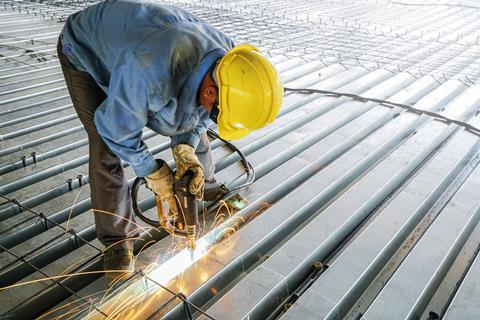
The first iteration of Seismic aimed to cut carbon emissions from the transport and steel associated with a project by 25%. It is now working on the second version with the objective of extending this to healthcare facilities and reducing the carbon impacts further.
This approach is being used for large office buildings too. Land Securities has adopted platform design with its Forge office blocks in Southwark, south-east London, using a standardised 9m x 9m grid and components. It says the platform approach should improve delivery and reduce the project’s carbon footprint.
Cundall’s Li makes the point that projects need to be considered from the whole-life perspective, not just the individual materials that go into them. “You can’t just say steel is better or worse or the same as concrete. They all have benefits and liabilities,” he says.
“Understanding whole-life carbon as an issue is crucial, and we need to be transparent otherwise you miss the opportunities [to save carbon]. A few years ago people had never heard of whole-life carbon; now people are serious about it – which is a positive sign of progress.”












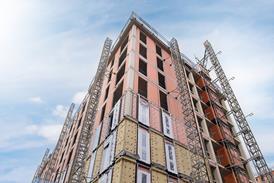


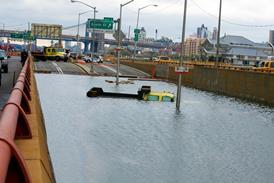
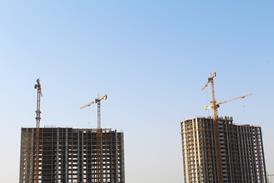










No comments yet